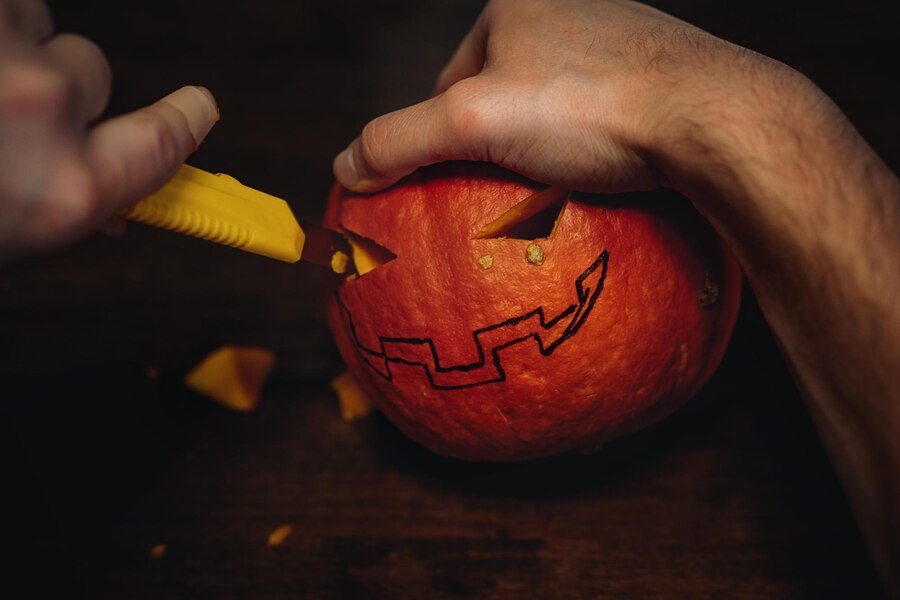Have you ever seen someone performing amazing tricks with what looks like a yo-yo on a string and wondered what it was? That, my friend, is a diabolo. But diabolo is much more than just a toy—it’s a captivating blend of art and science that has entertained and mesmerized people for centuries.
What is Diabolo?
A diabolo is a juggling prop consisting of an axle and two cups or discs. It’s spun on a string attached to two hand sticks, and the performer can manipulate it to do various tricks and stunts. Think of it as a yo-yo’s cooler, more versatile cousin.
Brief History of Diabolo
The origins of diabolo trace back to China, where it was known as the Chinese yo-yo. Over time, it made its way to Europe, evolving into the diabolo we know today. It gained popularity in the 19th and 20th centuries, becoming a favorite in circuses and street performances.
Why Diabolo is Popular
Diabolo’s appeal lies in its versatility and the sheer creativity it allows. From basic spins to complex tricks, it’s a hobby that can grow with you. Plus, it’s a fantastic way to improve hand-eye coordination, balance, and concentration.
Types of Diabolo
When starting out, you’ll notice there are different types of diabolo, each offering unique experiences.
Single Diabolo
This is the most common type and ideal for beginners. It consists of one diabolo being manipulated on a string, allowing for a wide range of tricks and stunts.
Double Diabolo
For those looking to challenge themselves, double diabolo involves using two diabolos on the same string. This adds complexity and opens up even more trick possibilities.
Triple Diabolo
Triple diabolo is for the true experts. It’s incredibly challenging and requires significant skill and practice. Mastering this can make you a standout performer.
Choosing the Right Diabolo
Selecting the right diabolo can make a big difference in your experience and progression.
Size and Weight
Diabolos come in various sizes and weights. Smaller diabolos are lighter and easier for beginners to handle, while larger, heavier diabolos are more stable and better for advanced tricks.
Material
Diabolos are typically made from rubber or plastic. Rubber diabolos are more durable and better for outdoor use, while plastic diabolos are lighter and may be preferable for indoor practice.
Axle Types
The axle is the central part of the diabolo. Fixed axles are good for beginners because they’re simpler to control, while bearing axles allow for longer spins and are preferred by advanced players.
Essential Diabolo Equipment
Beyond the diabolo itself, you’ll need a few other tools to get started.
Diabolo Sticks
The sticks you use to control the diabolo can be made from various materials like wood, metal, or carbon fiber. Each has its pros and cons, so it’s worth trying a few to see which you prefer.
String
Diabolo string can wear out quickly, so it’s good to have extra on hand. Strings come in different thicknesses and materials, which can affect your play.
Maintenance Tools
Keep your diabolo in top shape with tools like a wrench for tightening axles and cleaning supplies for the cups and string.
Getting Started with Diabolo
Ready to start your diabolo journey? Here are the basics to get you going.
Basic Techniques
Start with getting your diabolo spinning. Place it on the string, give it a toss, and use the sticks to control its movement. Practice moving the diabolo from side to side and keeping it balanced.
First Steps
Learn to toss the diabolo into the air and catch it. This basic toss is the foundation for many tricks. Also, try rolling the diabolo on the ground and lifting it with the string.
Common Beginner Mistakes
Beginners often struggle with keeping the diabolo balanced. This can usually be fixed by adjusting your hand movements and ensuring the string tension is just right.
Intermediate Diabolo Tricks
Once you’ve got the basics down, it’s time to learn some intermediate tricks.
Trapeze
This trick involves swinging the diabolo over one of the sticks and catching it on the string. It’s a great way to start learning string tricks.
Sun
For the sun trick, you’ll spin the diabolo in a circular motion around the string and your sticks. It’s a visually impressive trick that’s fun to perform.
Cat’s Cradle
This involves creating a cradle-like pattern with the string and moving the diabolo through it. It’s a bit tricky but very rewarding.
Advanced Diabolo Tricks
For those who have mastered the basics and intermediate tricks, here are some advanced techniques to try.
Vertax (Vertical Axis)
Vertax involves spinning the diabolo vertically rather than horizontally. This opens up a whole new world of tricks and requires excellent control.
Multiple Diabolo Tricks
Using two or more diabolos at once can be incredibly challenging but also incredibly rewarding. Start with two and work your way up.
Integration with Other Juggling Props
Combine diabolo with other juggling props like balls or clubs for a truly impressive performance. This requires a high level of skill and coordination.
Diabolo in Performances
Whether you’re performing for friends or on stage, here are some tips to make your diabolo act shine.
Stage Performance Tips
Practice in front of a mirror or record yourself to see how your performance looks. Pay attention to your posture and facial expressions.
Choreography with Diabolo
Plan your moves and transitions. Think about how you can flow from one trick to another smoothly and keep the audience engaged.
Engaging the Audience
Make eye contact and smile. Interact with your audience by explaining what you’re doing or telling a story with your performance.
Competitive Diabolo
Want to take your diabolo skills to the next level? Consider competing.
Diabolo Competitions Around the World
There are many diabolo competitions globally, from local contests to international championships. Each has its own rules and judging criteria.
How to Prepare for a Competition
Practice consistently and focus on your weakest tricks. Watch videos of past competitions to understand what the judges are looking for.
Judging Criteria
Competitions usually judge based on creativity, difficulty, execution, and overall performance. Make sure you practice all aspects of your routine.
Health and Safety Considerations
Like any physical activity, playing diabolo comes with some risks. Here’s how to stay safe.
Preventing Injuries
Warm up before practicing to avoid strains and sprains. Stretch your wrists, arms, and shoulders.
Proper Warm-Up Techniques
Start with light cardio to get your blood flowing, then move on to specific stretches for the muscles you’ll use.
Safe Practice Environments
Practice in an open space free of obstacles. If you’re indoors, make sure there’s enough room to move around without hitting anything.
Diabolo Community and Culture
One of the best parts of playing diabolo is the community that comes with it.
Online Diabolo Communities
Join online forums and social media groups to connect with other diabolo enthusiasts. Share tips, tricks, and videos of your progress.
Diabolo Festivals and Gatherings
Attend festivals and meetups to learn from others, watch performances, and participate in workshops.
Influential Diabolo Players
Follow top diabolo players online to get inspired. Many of them share tutorials and tips that can help you improve.
The Benefits of Playing Diabolo
Playing diabolo isn’t just fun—it’s also good for you.
Physical Benefits
Diabolo helps improve hand-eye coordination, balance, and fine motor skills. It’s a great way to stay active.
Mental Benefits
Learning new tricks requires concentration and perseverance, which can boost your mental focus and problem-solving skills.
Social Benefits
Playing diabolo can help you meet new people and build connections with others who share your interest.
Teaching Diabolo
If you’ve mastered diabolo, why not share your skills with others?
Tips for Diabolo Instructors
Be patient and encouraging. Break tricks down into manageable steps and celebrate your students’ progress.
Designing a Diabolo Curriculum
Start with basic skills and gradually introduce more complex tricks. Include plenty of practice time and opportunities for students to perform.
Teaching Different Skill Levels
Tailor your teaching approach to each student’s level. Beginners need more guidance, while advanced students may benefit from learning new variations on familiar tricks.
The Future of Diabolo
What’s next for diabolo? Here are some trends and innovations to watch for.
Innovations in Diabolo Design
Manufacturers are constantly coming up with new materials and designs to improve diabolo performance. Keep an eye out for the latest models.
Trends in Diabolo Performance
From combining diabolo with dance to creating intricate routines with multiple props, performers are always pushing the boundaries.
The Growing Popularity of Diabolo

With more people discovering diabolo through social media and festivals, the community is growing. This means more opportunities to learn, perform, and connect with others.
Conclusion
Diabolo is a fascinating and rewarding hobby that offers endless possibilities for creativity and skill development. Whether you’re just starting out or looking to compete, there’s always something new to learn. So grab your diabolo, get practicing, and join the vibrant global community of diabolo enthusiasts.
FAQs
What is the best diabolo for beginners?
The best diabolo for beginners is usually a medium-sized, fixed axle diabolo. It’s easier to control and learn basic tricks with.
How long does it take to learn diabolo?
It varies depending on your dedication and practice. Most people can learn basic tricks in a few weeks, but mastering advanced techniques can take years.
Can diabolo be played indoors?
Yes, but make sure you have enough space and that the area is free of obstacles to avoid damage or injury.
What are some common diabolo injuries and how to avoid them?
Common injuries include strains and sprains. Warm up properly, practice in a safe environment, and take breaks to avoid overuse injuries.
Where can I find diabolo communities online?
There are many online communities on platforms like Reddit, Facebook, and specialized forums where you can connect with other diabolo enthusiasts.
